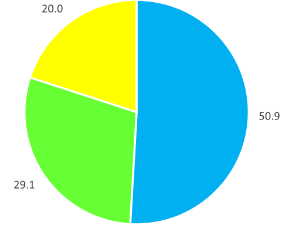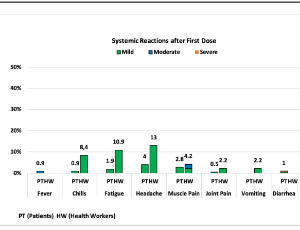Loading
Archives of Nephrology and Renal Studies
ISSN: 2771-1889
Editors Choice Articles
The RiVUR Study Outcomes and Implications on the Management of Vesicoureteral Reflux
Tiffany Damm, Ranjiv Mathews
The Randomized intervention for Vesicoureteral Reflux (RiVUR) study was an effort by the National Institute of Health to identify the most significant question on the management of vesicoureteral reflux (VUR), i.e. Did antibiotic prophylaxis reduce the incidence of recurrent urinary tract infections (UTI) in children with VUR? During the initial phases of the RiVUR study, several similar studies were performed that seemed to indicate lack of benefit of antibiotic prophylaxis in VUR.
Arch Nephrol Ren Stud, 2022, Volume 2, Issue 1, p1-5 | DOI: 10.33696/nephrology.2.006
A Case Report and Literature Review on Complications of Pediatric Maintenance Intravenous Fluids
Jaicy Pottokaran, Larry T Patterson, Mark S Segal
After establishing the new standard of care of isotonic fluids for maintenance therapy, there has not been a systematic follow-up to determine whether the goal of the switch has been achieved or whether there have been any unexpected complications with the change. This is a brief review of the history of maintenance intravenous fluids and potential complications of isotonic fluid therapy spurred by a case.
Arch Nephrol Ren Stud, 2024, Volume 4, Issue 1, p1-7 | DOI: 10.33696/nephrology.4.010
Factors Associated with Psychiatric Vulnerability in Patients with End-Stage Renal Disease at the Zou/Collines Departmental Hospital, Benin
Séraphin Ahoui, Joseph Godonou, Aimé Vinassé, Aubin Melikan, Jaurel Godjo, Elfreed Alavo, Jacques Akobi, Eric Lossou, Sécondine Gnitoungbe, Sylvain Glitho, Francis Tognon Tchegnonsi
Introduction: End-stage chronic kidney disease (CKD) poses a significant challenge to patients' mental health, frequently leading to anxiety, depression, and sleep disturbances. This study aimed to identify factors associated with psychiatric vulnerability among patients with end-stage renal disease at the Zou/Collines Departmental Hospital in Benin. Methods: We conducted a cross-sectional study from January to June 2024, including patients with end-stage renal disease managed in the internal medicine department.
Arch Nephrol Ren Stud, 2025, Volume 5, Issue 1, p6-13 | DOI: 10.33696/nephrology.5.014
Review of Renal Transplantation of Hepatitis C Viremic Donor Organs into Aviremic Recipients
Jiawei Cui, Roman Perri
The development of direct-acting antiviral agents for the treatment of Hepatitis C (HCV) has changed the practice of treating patients with HCV. In particular, organ transplant recipients who have not previously been exposed to HCV are now able to consider receiving an organ from a donor who is infected with HCV, and anticipate effective antiviral therapy after transplantation.
Arch Nephrol Ren Stud, 2022, Volume 2, Issue 1, p9-16 | DOI: 10.33696/nephrology.2.008
The Role of Direct Oral Anticoagulants in Advanced Chronic Kidney Disease – Questions and Future directions
Filip Ionescu, Saima Mansuri
With the advent of the direct oral anticoagulants (DOACs), patients requiring anticoagulation for common conditions such as atrial fibrillation and venous thromboembolism no longer need to worry about dietary restrictions or regular monitoring of the international normalized ratio which complicated warfarin treatment.
Arch Nephrol Ren Stud, 2021, Volume 1, Issue 1, p16-20 | DOI: 10.33696/nephrology.1.003
How Well Do Hemodialysis Patients Respond to the BNT162b2 mRNA COVID-19 Vaccine?
Fernando Carrera, Joana Costa, Luciano Pereira, Marco Marques, Belarmino Spencer, Francisco Ferrer
In January 2020, the World Health Organization (WHO) classified COVID-19 to be a Public Health Emergency of International Concern and declared it a pandemic on March 11, 2020 [1]. Over one hundred and eighty-five million people have been infected by SARS-CoV-2 and roughly four million have died worldwide so far
Arch Nephrol Ren Stud, 2021, Volume 1, Issue 1, p21-27 | DOI: 10.33696/nephrology.1.004
Commentary on: “Multiple Single Cannulation Technique of Arteriovenous Fistula: A Randomised Controlled Trial”
Ricardo Peralta, Rui Sousa, Bruno Pinto, Pedro Gonçalves, Carla Felix, João Fazendeiro Matos
One of the most important renal nursing procedures is the cannulation of a vascular access (VA), a procedure that is carried out on every single dialysis treatment. VA cannulation method is still a procedure that reflects local unit practices and the skill of the individual nurse. Despite the impact needling has on VA survival and patient outcome, no universal or standardized method has been proposed for cannulation.
Arch Nephrol Ren Stud, 2021, Volume 1, Issue 1, p28-33 | DOI: 10.33696/nephrology.1.005
About Scientific Archives
Scientific Archives is a global publisher initiated with the mission of ensuring equal opportunity for accessing science to research community all over the world. Spreading research findings with great relevance to all channels without any barrier is our goal. We want to overcome the challenges of Open Access with ensured quality and transparency.
